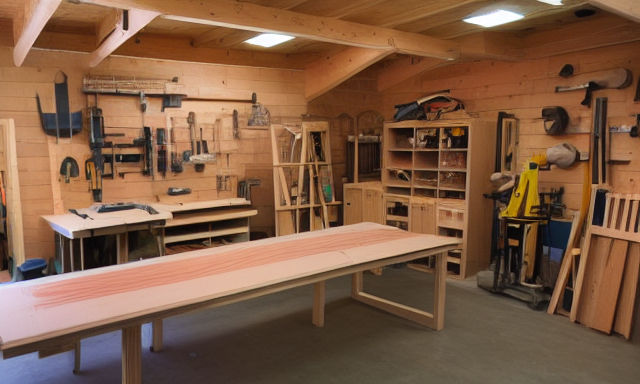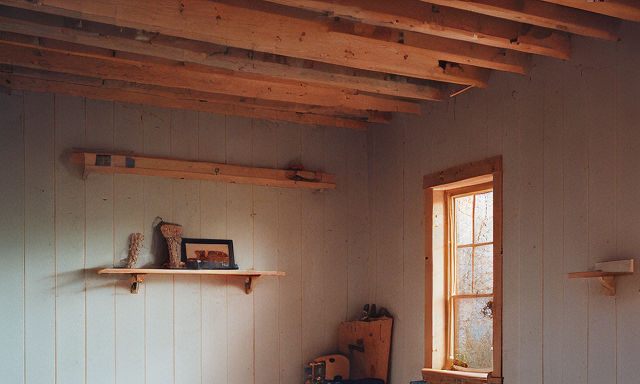DIY Kitchen Wood Backsplash
You don’t have to pay a lot of money to get a beautiful kitchen backsplash. Instead of spending a fortune on designer tiles, you can find instructions to make your own woodworking projects.

Building a DIY Wooden Kitchen Backsplash: Step-by-Step Guide
Elevate your kitchen with a touch of rustic charm by creating a beautiful and functional wooden backsplash. This guide provides a basic framework, allowing you to customize it to your preferences.
Materials:
- Lumber of your choice (consider reclaimed wood, plywood, or pine boards) – quantity depends on your backsplash size
- Wood glue
- Clamps (optional)
- Finishing materials (paint, stain, polyurethane, etc. – optional)
- Sandpaper (various grits)
- Screws (optional)
- Nails (optional)
- Construction adhesive
- Sealant (optional)
- Miter saw (or circular saw and miter box)
- Drill
- Sander
- Level
- Tape measure
- Pencil
Instructions:
1. Planning and Measurement:
- Measure the area you want to cover with the backsplash.
- Sketch a layout and determine the size and arrangement of your wooden pieces.
- Factor in any outlets or switches that need to be accommodated.
2. Cutting the wood:
- Use your chosen cutting tool to cut the wood pieces according to your plan. Ensure precise cuts for a clean and professional finish.
3. Sanding the wood:
- Sand all surfaces of the wood pieces using various grits of sandpaper, starting coarse and progressing to finer grits, to achieve a smooth finish.
4. Applying the finish (optional):
- You can paint, stain, or apply a clear sealant to the wood pieces before installation. Choose a finish that complements your kitchen style and consider its water resistance (especially near the stovetop).
5. Installation:

Option 1: Using construction adhesive:
- Apply a consistent bead of construction adhesive to the back of each wood piece.
- Carefully position the piece on the wall, ensuring it’s level and aligned with your layout.
- Press firmly to ensure good contact with the wall.
- Use clamps (optional) to hold the pieces in place while the adhesive dries according to the manufacturer’s instructions.
Option 2: Using nails or screws (for thicker wood):
- Pre-drill pilot holes in the wood pieces to prevent splitting.
- Apply construction adhesive to the back of each piece for added security.
- Position the piece on the wall and secure it with nails or screws through the pre-drilled holes.
6. Filling gaps (optional):
- For a seamless look, you can use wood filler to fill any small gaps between the wood pieces after installation. Once dry, sand the filled areas for a smooth finish.
7. Sealing the backsplash (optional):
- Applying a sealant around the edges and seams of the backsplash can provide additional moisture protection, especially near the sink or stovetop. Choose a sealant appropriate for your chosen finish.
Tips:
- Double-check your measurements and cuts for accuracy before proceeding.
- Wear safety glasses and gloves when using power tools.
- Consider using a backer board (like plywood) for uneven walls to create a flat surface for the backsplash.
- Start with a practice layout on the floor to visualize the final design before installing on the wall.
- This is a basic guide, and you can customize it further by using different wood types, creating patterns with the layout, or incorporating decorative elements.
Additional considerations:
- Be mindful of the fire code regulations in your area, which might have specific requirements for materials used near cooktops.
- Ensure proper ventilation around your stovetop if your backsplash design might affect airflow.
By following these steps and personalizing them to your preferences, you can create a beautiful and unique DIY wooden kitchen backsplash that adds character and value to your kitchen.
Here’s a video tutorial demonstrating the building and installation process for a DIY wooden kitchen backsplash:
Remember, safety comes first. Always wear appropriate protection when using power tools and consult with a professional if needed, especially when dealing with electrical work or plumbing modifications.
Remember to always follow proper safety precautions when working with wood and power tools.



